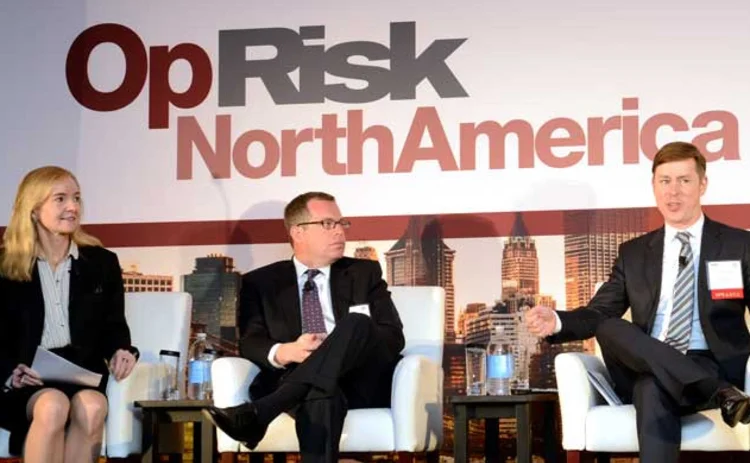
OpRisk North America: on AMA, cyber and the role of op risk
Basel Committee’s controversial proposal on op risk modelling spurs debate at US event

This year's OpRisk North America conference heard passionate and often heated discussion about regulation, op risk modelling, cyber risk and the role of op risk managers within the business.
A particular focus of the event, held on March 15–16 in New York, was a January proposal by the Basel Committee on Banking Supervision to remove the advanced measurement approach to op risk, preventing banks from using their own internal models. While many banks criticised the move, some senior US regulators sought to defend the Basel Committee's position.
To read more, please click on the articles below.
Op risk models still needed despite SMA, says regulator
Models “play an important role in quantifying risk”, says OCC's Beth Dugan
Dump jargon and engage with business, op risk managers told
Operational risk urged to assume bigger role in strategic and HR decisions
Conference hears fierce criticism of Basel op risk plans
Op risk professionals pour scorn on SMA charge, but some bank experts speak out in favour
Op risk managers must be ‘change agents’, says Fed official
Fed's Gwendolyn Collins calls on op risk managers to be pioneers, not policemen
Cyber threats forcing business continuity overhaul
Communications need close attention when firms are attacked, conference hears
US DoJ reverses policy of withholding cyber-attack intelligence
Law enforcement failed to warn Heartland of 2009 security breach, says FS-Isac’s Nelson
Photogallery: OpRisk North America 2016
Free-to-view photographs from OpRisk North America 2016
Only users who have a paid subscription or are part of a corporate subscription are able to print or copy content.
To access these options, along with all other subscription benefits, please contact info@risk.net or view our subscription options here: http://subscriptions.risk.net/subscribe
You are currently unable to print this content. Please contact info@risk.net to find out more.
You are currently unable to copy this content. Please contact info@risk.net to find out more.
Copyright Infopro Digital Limited. All rights reserved.
You may share this content using our article tools. Printing this content is for the sole use of the Authorised User (named subscriber), as outlined in our terms and conditions - https://www.infopro-insight.com/terms-conditions/insight-subscriptions/
If you would like to purchase additional rights please email info@risk.net
Copyright Infopro Digital Limited. All rights reserved.
You may share this content using our article tools. Copying this content is for the sole use of the Authorised User (named subscriber), as outlined in our terms and conditions - https://www.infopro-insight.com/terms-conditions/insight-subscriptions/
If you would like to purchase additional rights please email info@risk.net
More on Risk management
Revealed: the three EU banks applying for IMA approval
BNP Paribas, Deutsche Bank and Intesa Sanpaolo ask ECB to use internal models for FRTB
FICC takes flak over Treasury clearing proposal
Latest plans would still allow members to bundle clearing and execution – and would fail to boost clearing capacity, critics say
Buy side would welcome more guidance on managing margin calls
FSB report calls for regulators to review existing standards for non-bank liquidity management
Japanese megabanks shun internal models as FRTB bites
Isda AGM: All in-scope banks opt for standardised approach to market risk; Nomura eyes IMA in 2025
Benchmark switch leaves hedging headache for Philippine banks
If interest rates are cut before new benchmark docs are ready, banks face possible NII squeeze
Op risk data: Tech glitch gives customers unlimited funds
Also: Payback for slow Paycheck Protection payouts; SEC hits out at AI washing. Data by ORX News
The American way: a stress-test substitute for Basel’s IRRBB?
Bankers divided over new CCAR scenario designed to bridge supervisory gap exposed by SVB failure
Industry warns CFTC against rushing to regulate AI for trading
Vote on workplan pulled amid calls to avoid duplicating rules from other regulatory agencies







